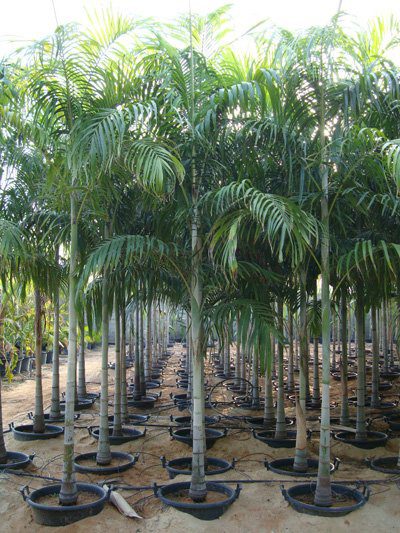Description
Carpentaria acuminata, commonly known as the Carpentaria Palm, is a species of palm tree native to the rainforests of northern Australia. It belongs to the family Arecaceae. Here’s some more information about this majestic palm:
- Appearance: Carpentaria acuminata is a tall palm tree, reaching heights of up to 25 meters (82 feet) in its natural habitat. It has a single, slender gray trunk that is smooth and slightly swollen at the base. Atop the trunk sits a large crown of gracefully arching, pinnate leaves. The leaves are glossy green, composed of numerous long leaflets arranged along the leaf stalk.
- Habitat: This palm species is endemic to the tropical rainforests of northern Australia, particularly in the Cape York Peninsula and the Northern Territory. It thrives in warm, humid climates with well-drained soils. It is often found growing along riverbanks, in lowland forests, and in moist, sheltered areas.
- Flowers and Fruits: Carpentaria palms produce large, creamy-white flowers arranged in clusters that emerge from among the leaves. The flowers are followed by small, round fruits that turn from green to black as they ripen. The fruits contain a single seed.
- Cultural Significance: Carpentaria acuminata has cultural significance to Indigenous Australian peoples, who have traditionally used various parts of the palm for food, shelter, and ceremonial purposes. The palm’s fronds are used for weaving baskets, mats, and other handicrafts, while the seeds are sometimes eaten.
- Ornamental Use: Because of its attractive appearance, Carpentaria acuminata is commonly cultivated as an ornamental palm in tropical and subtropical regions worldwide. It is often planted in gardens, parks, and landscapes to provide a tropical ambiance and enhance aesthetic appeal.
- Propagation: Carpentaria acuminata is typically propagated from seeds, which should be planted in well-draining soil and kept consistently moist until germination occurs. The seeds may take several months to germinate, and the young palms require warm, humid conditions to thrive.
Overall, Carpentaria acuminata is valued for its graceful form, glossy foliage, and cultural significance, making it a beloved and iconic palm species in its native habitat and a popular choice for ornamental planting in tropical gardens worldwide.





Reviews
There are no reviews yet.